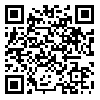BibTeX | RIS | EndNote | Medlars | ProCite | Reference Manager | RefWorks
Send citation to:
URL: http://tumj.tums.ac.ir/article-1-1254-en.html
Introduction: Reciprocal changes are ST depression ≥1 mm in electrocardiogram of the patients with acute myocardial infarction in the reciprocal leads. This question that these changes are merely secondary to ST elevation in infarction area or that they are truly subendocardial ischemia secondary to involvement of coronary artery that perfuse that area is not clearly defined.
Methods and Materials: In this study, 33 patients with acute myocardial infarction and reciprocal changes in ECG at the time of admission, were selected and coronary angiography was performed in them in a week of infarction.
Results: Correlation between reciprocal changes in ECG and involvement of reciprocal coronary artery the coronary artery that perfuse area of myocardium related to reciprocal changes in ECG were studied. 32-63 percent of patients (1/3-2/3) with reciprocal changes had significant stenosis of reciprocal coronary artery in coronary angiography (CI=95 percent). The incidence of multivessel disease was about 60.6 percent. After coronary angiography 33.3 percent of patients referred for coronary arteries bypass graft surgery (CABGS) and 27.3 percent for percutaneous transluminal coronary artery angioplasty (PTCA). In the other words, 60.6 percent of our patients refered for revascularization, PTCA or CABGS.
Conclusion: We concluded that because of the need for intervention in about 60 percent of our patients, coronary angiography could be recommended in all patients with acute myocardial infarction and reciprocal changes in ECG.
| Rights and permissions | |
 |
This work is licensed under a Creative Commons Attribution-NonCommercial 4.0 International License. |





